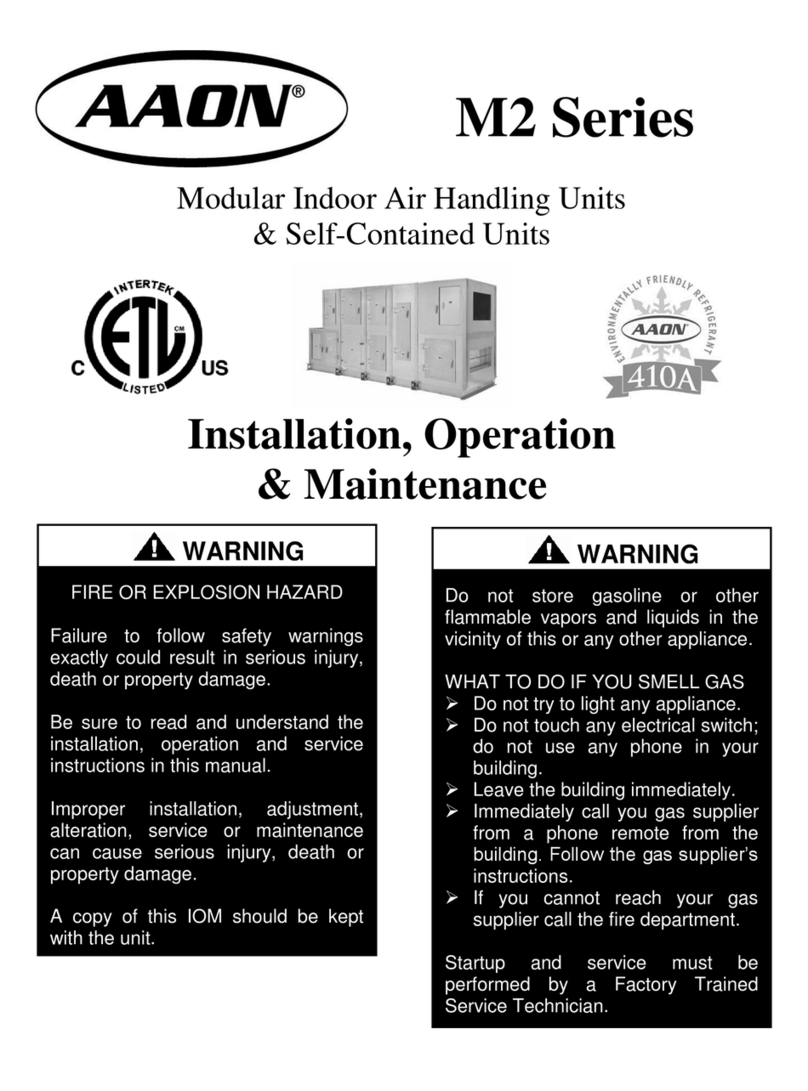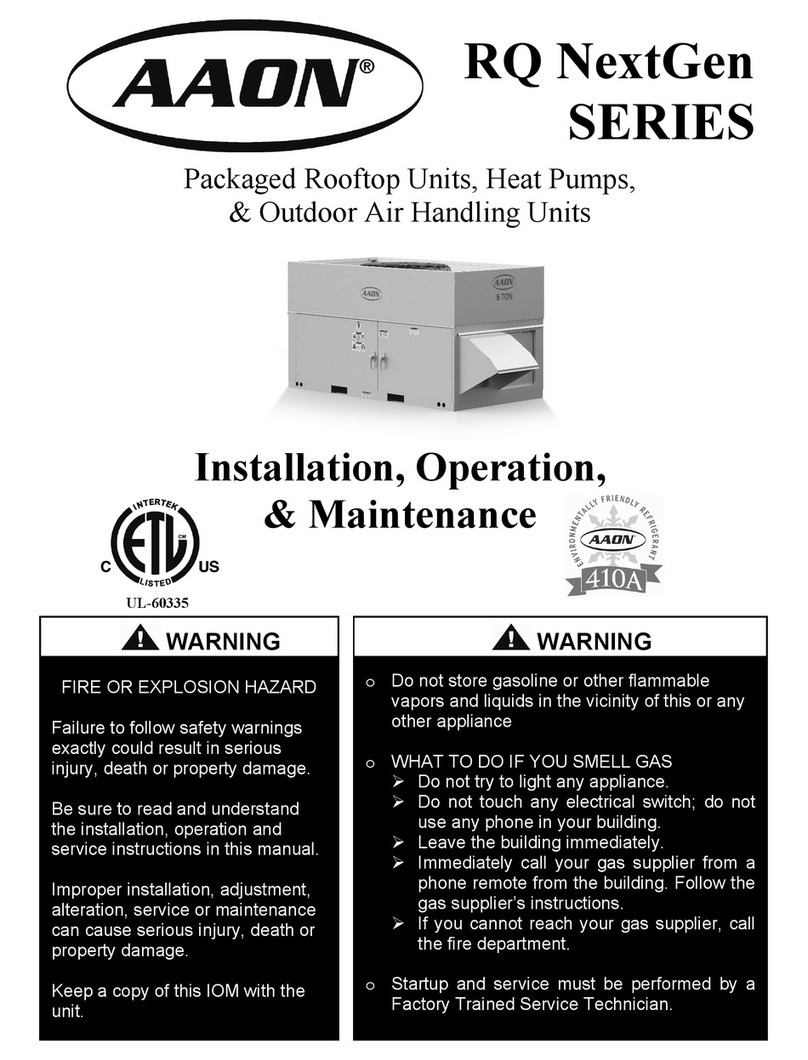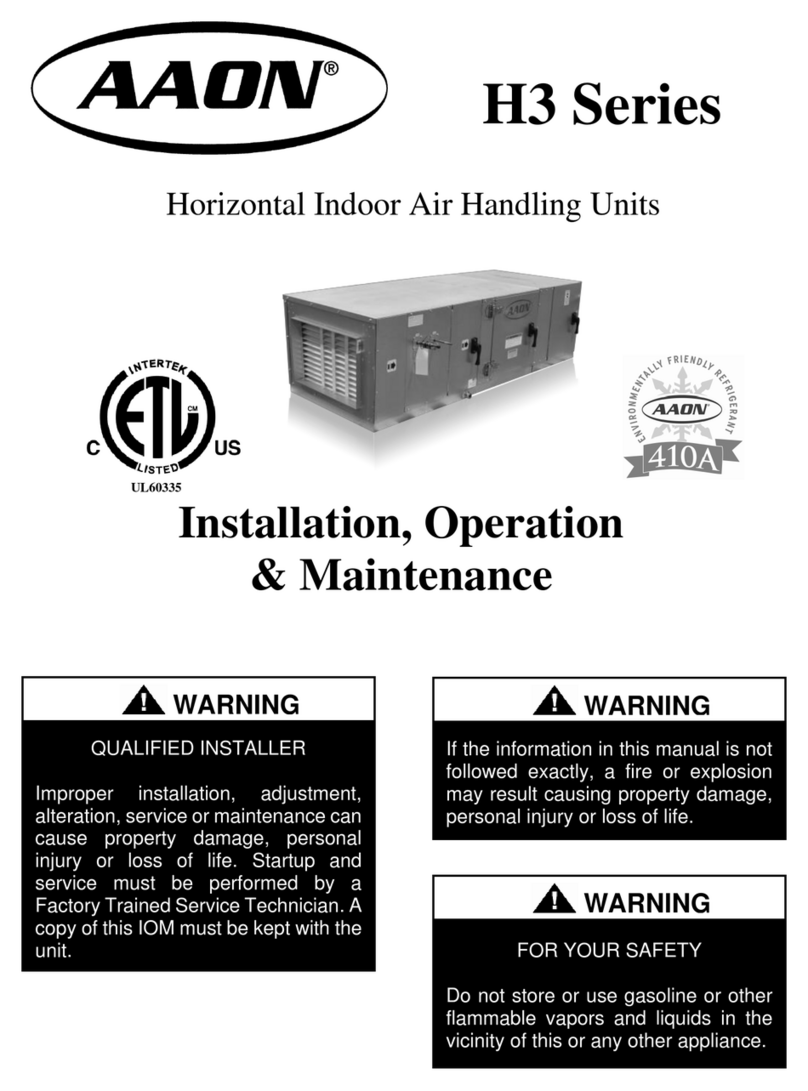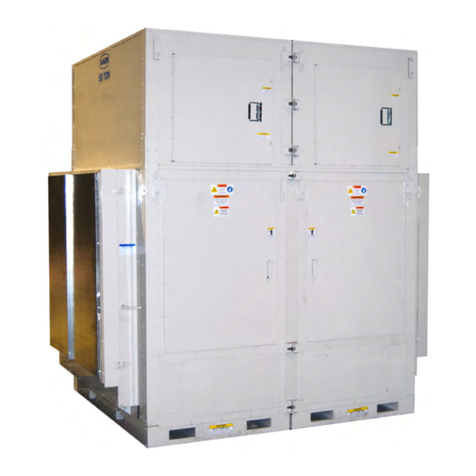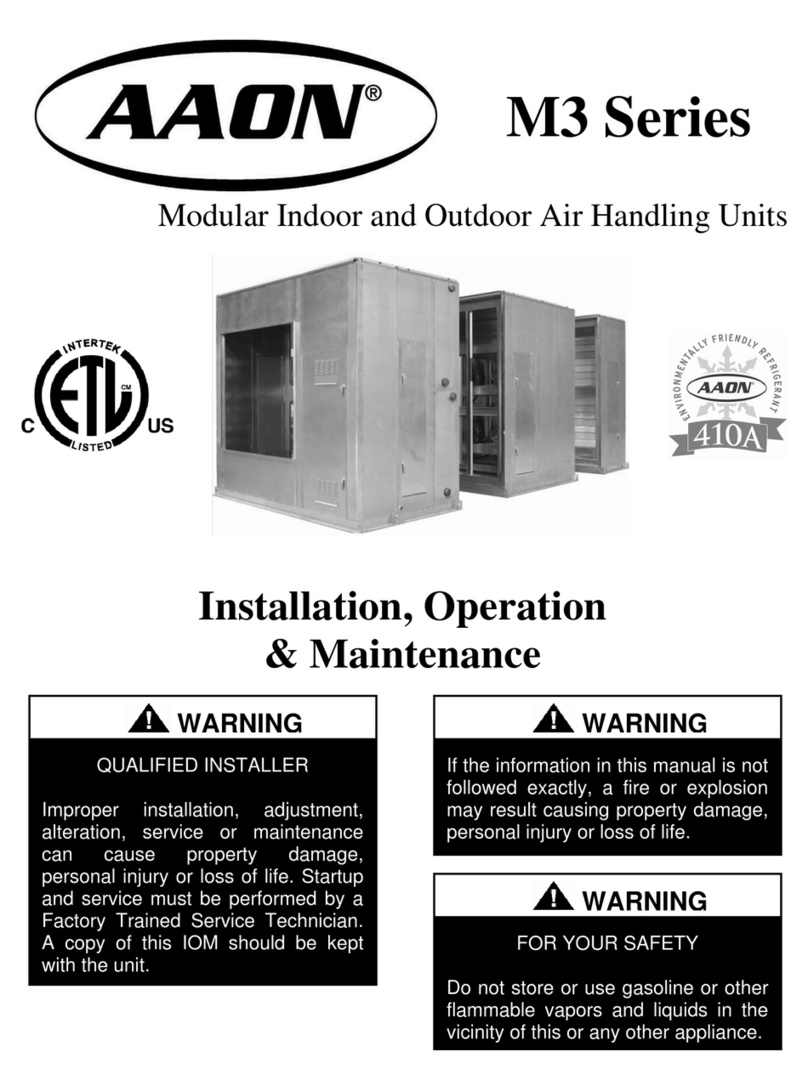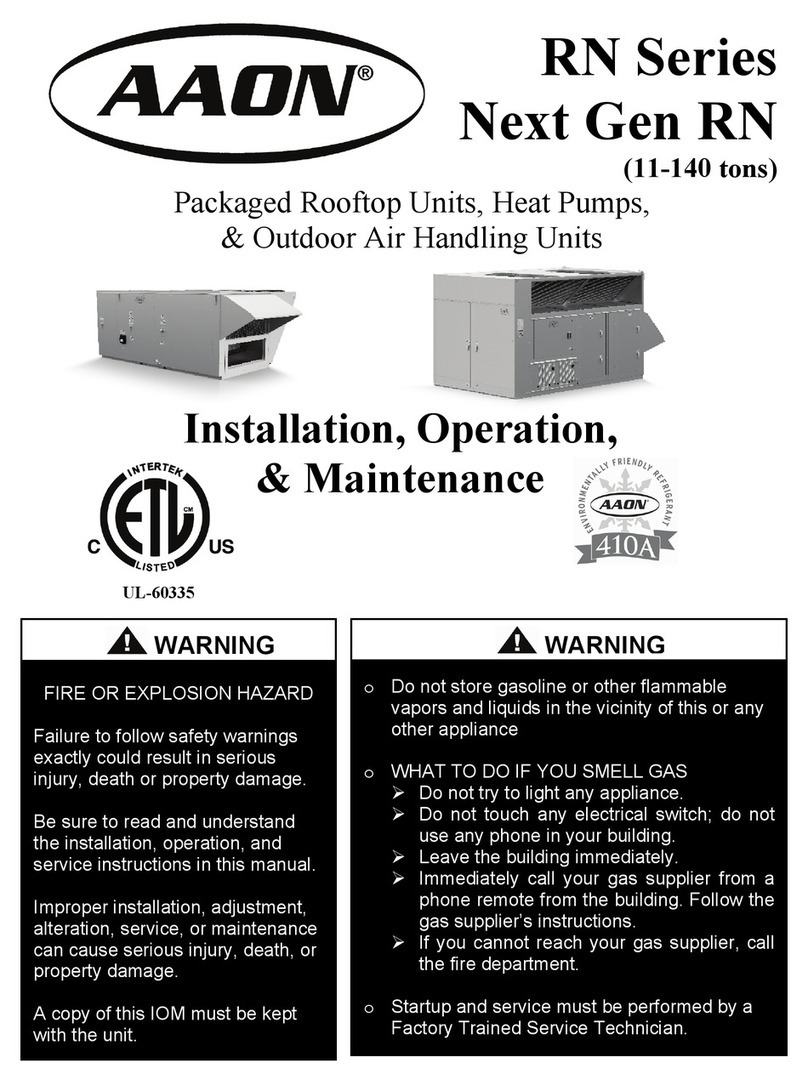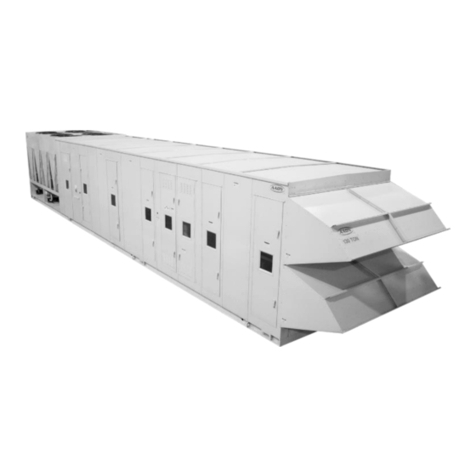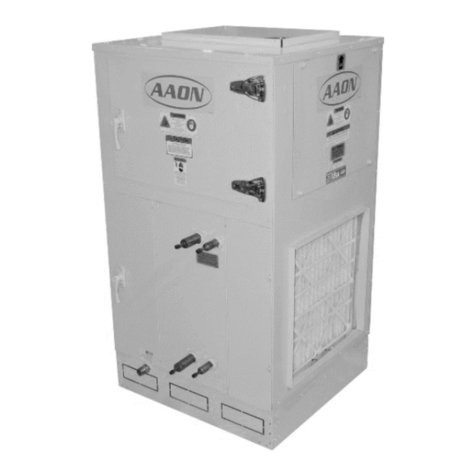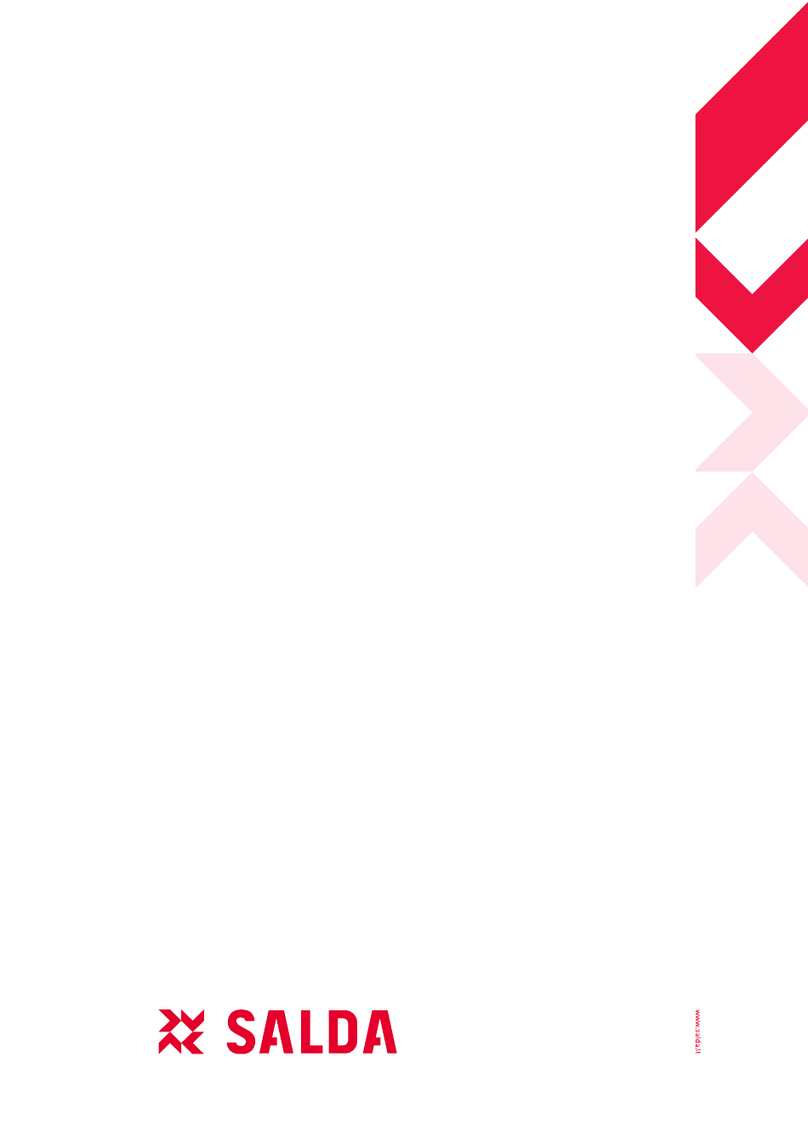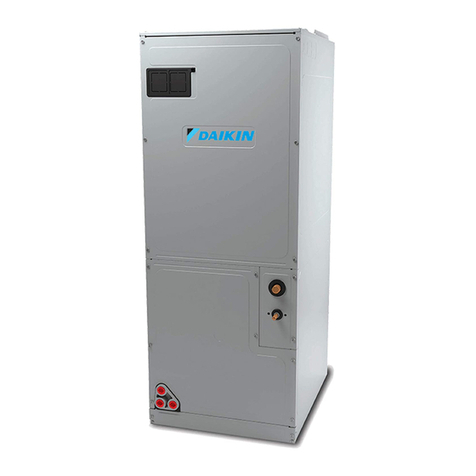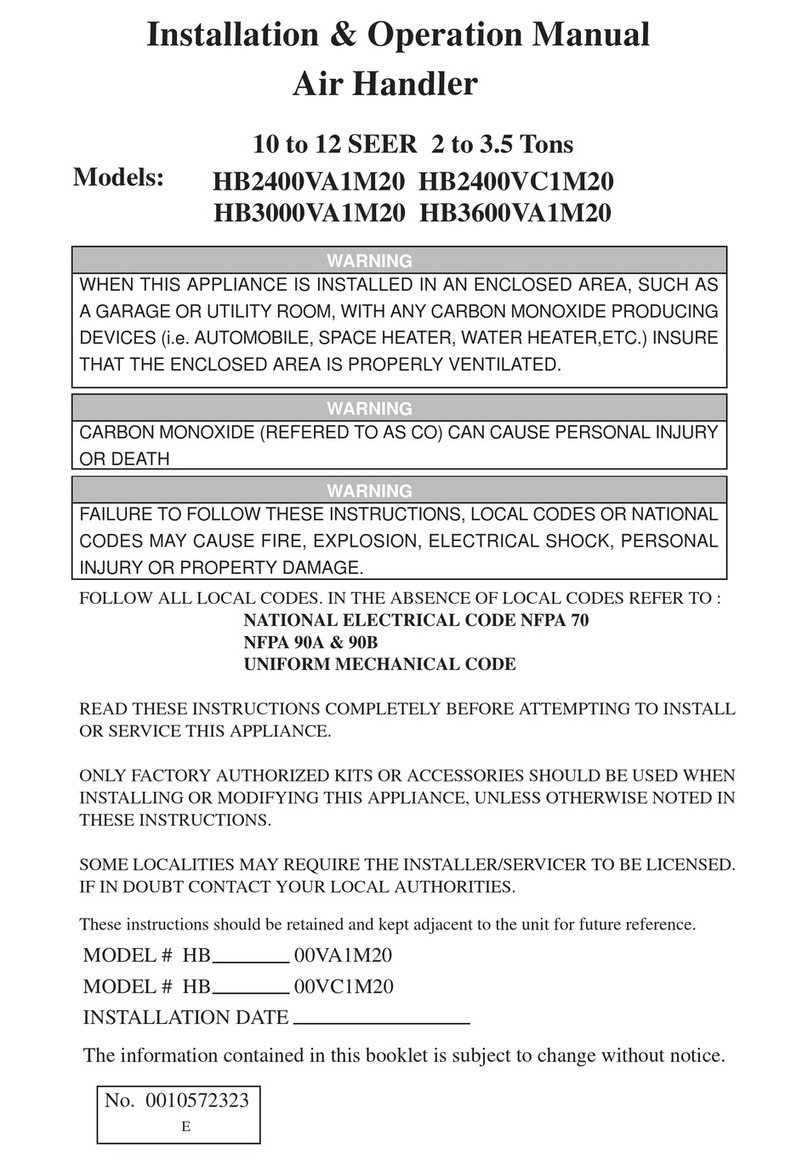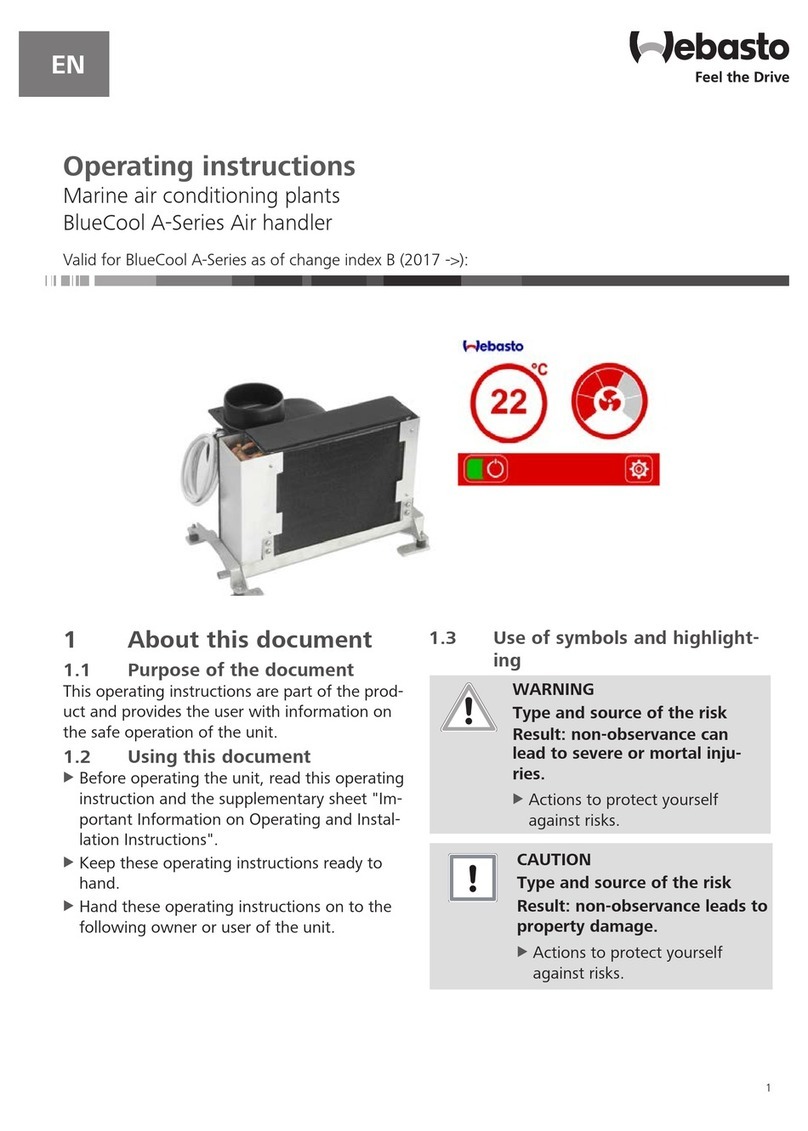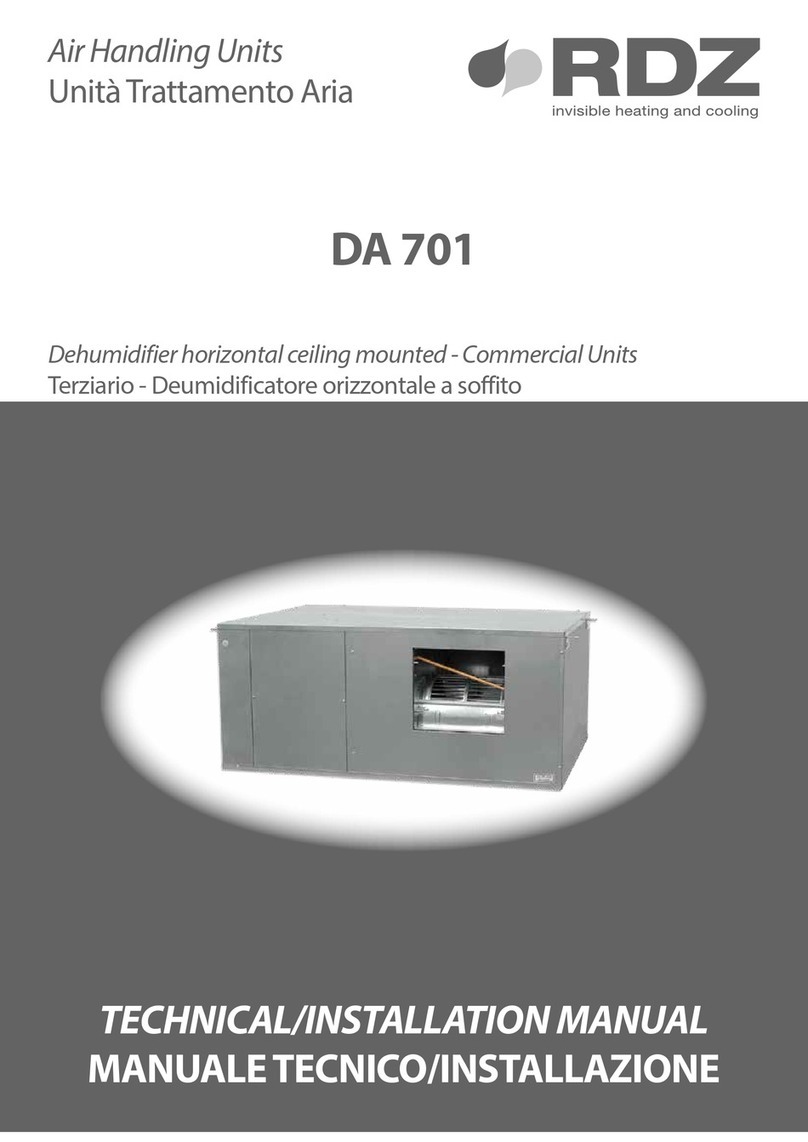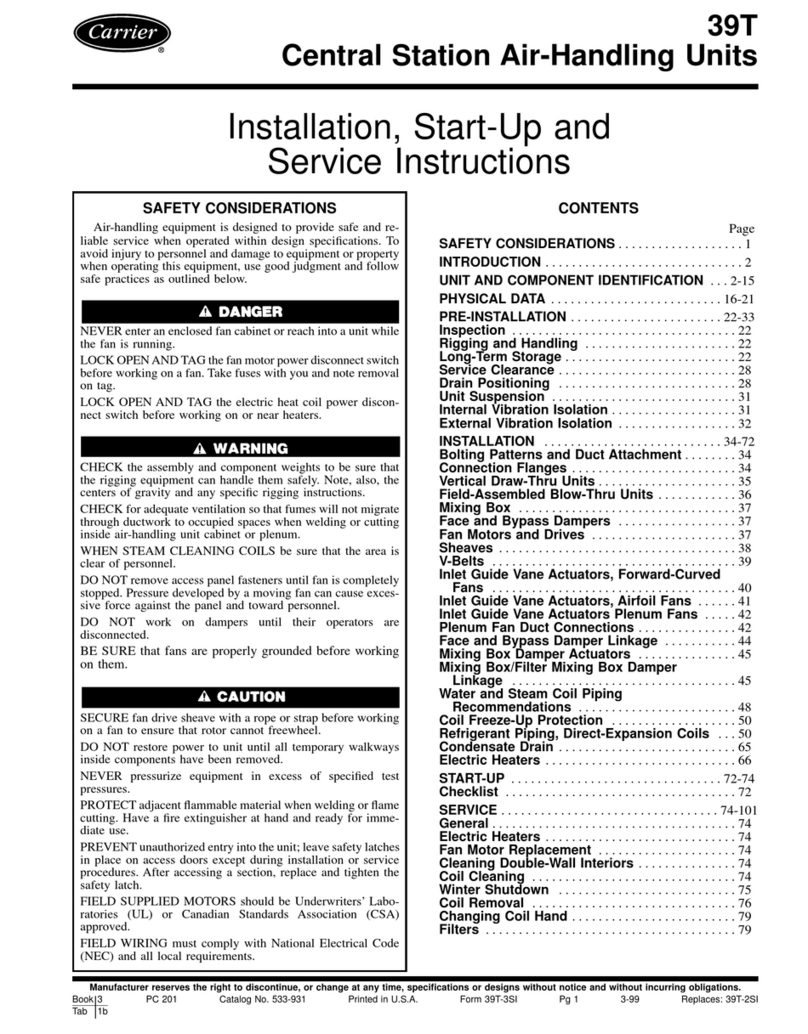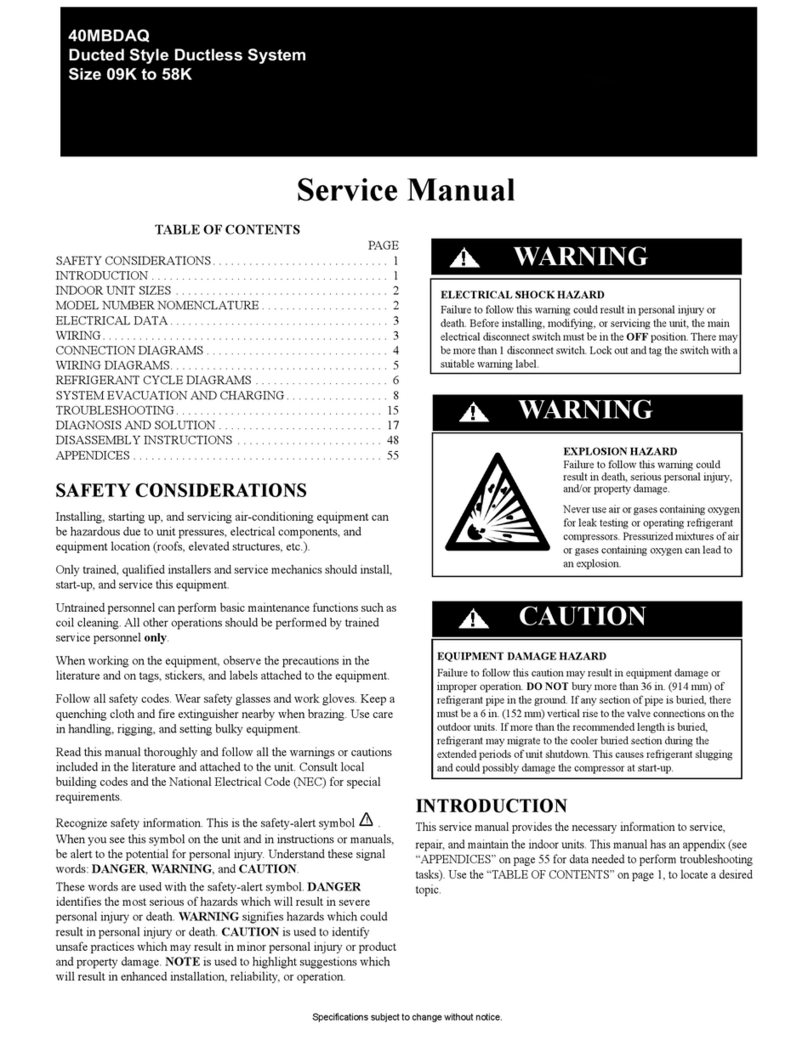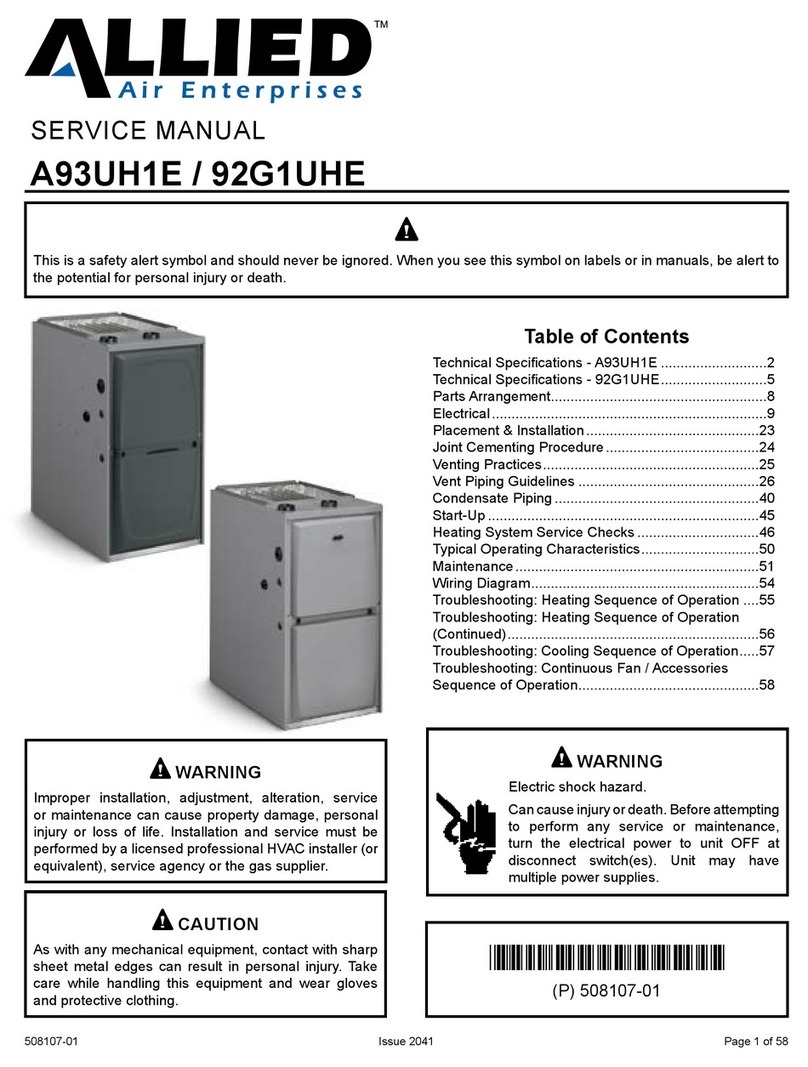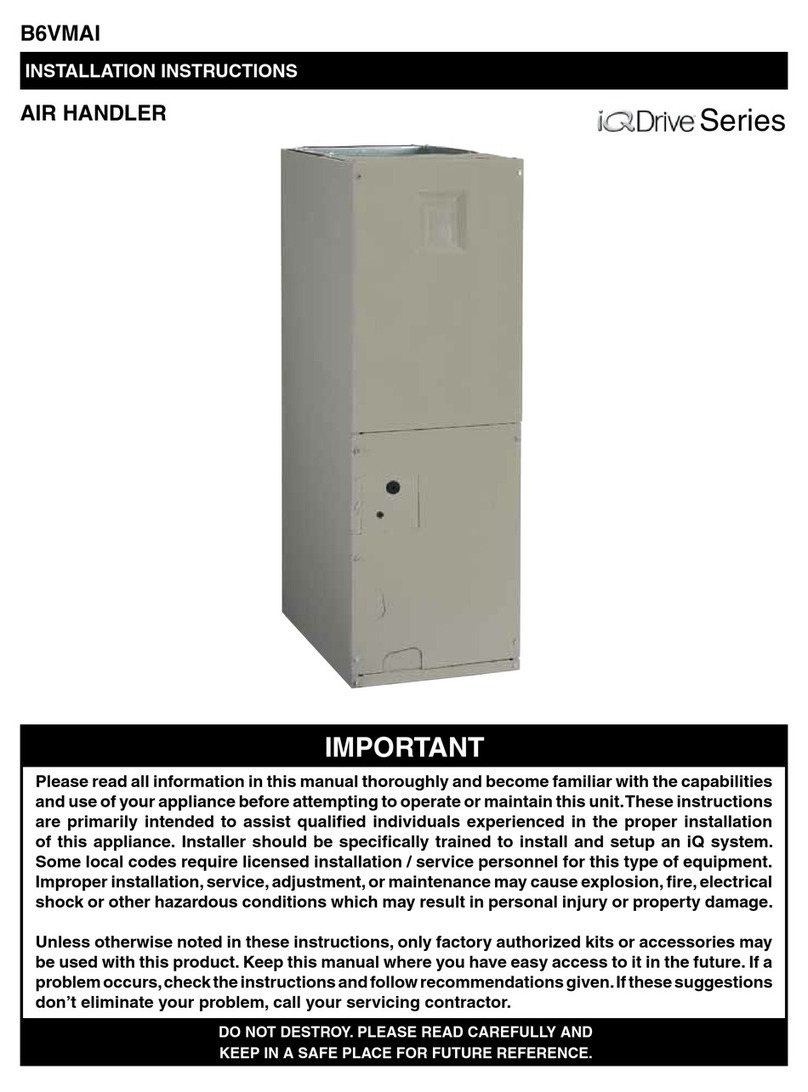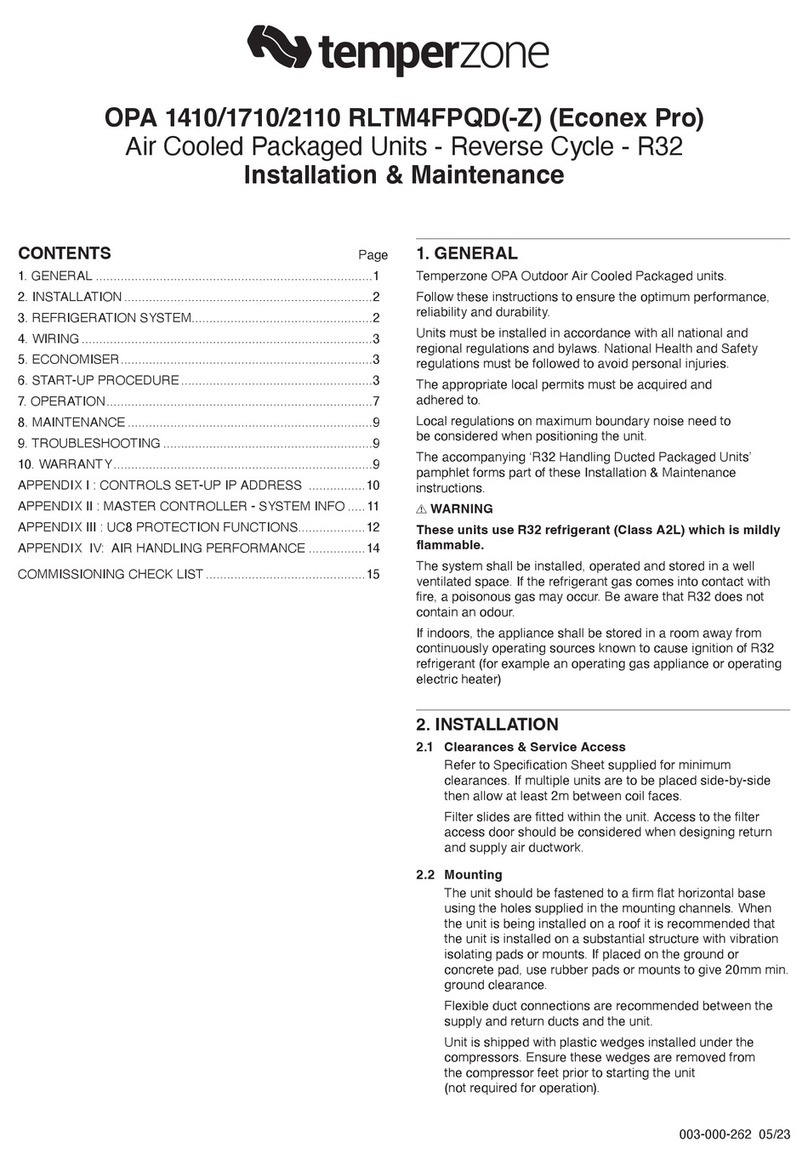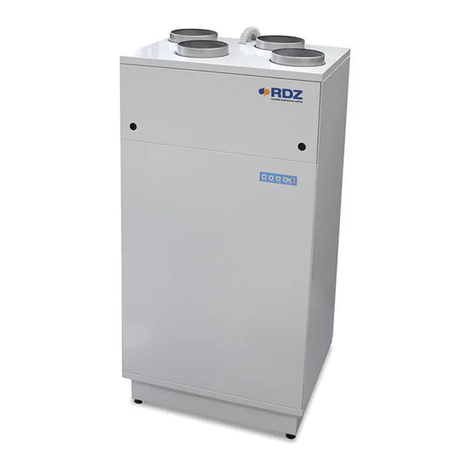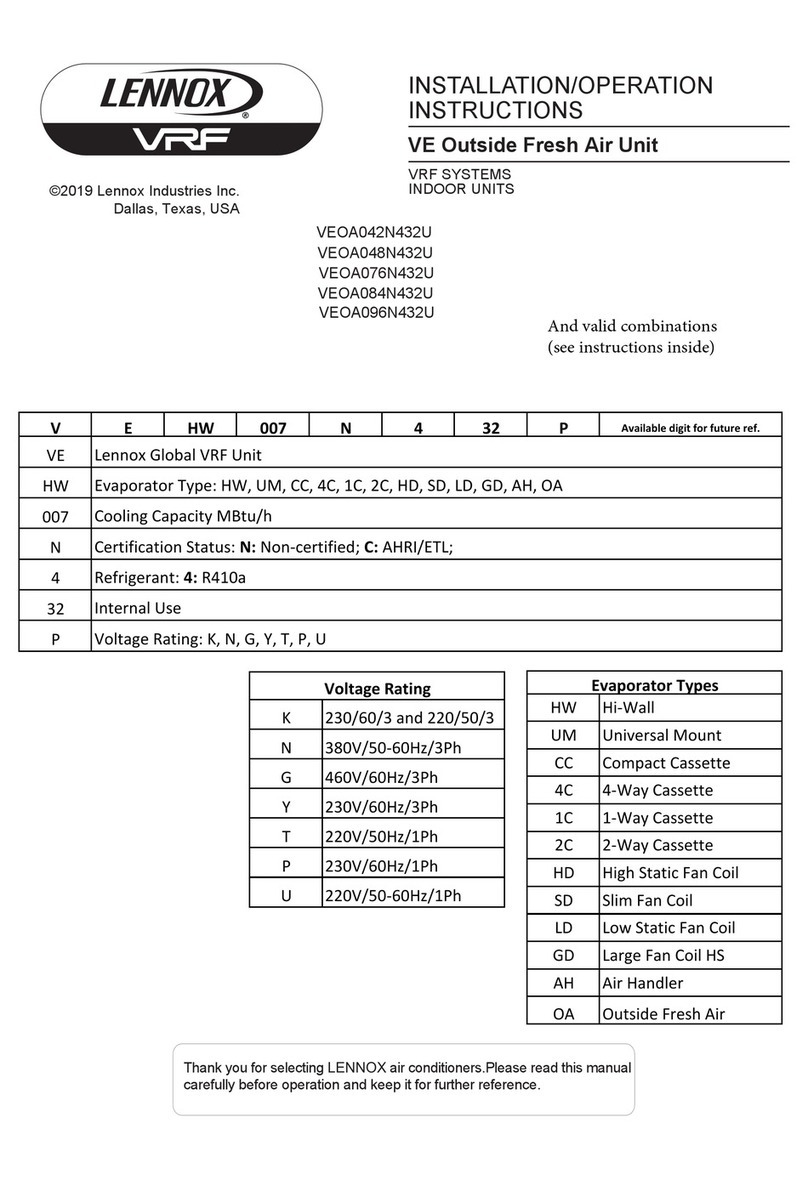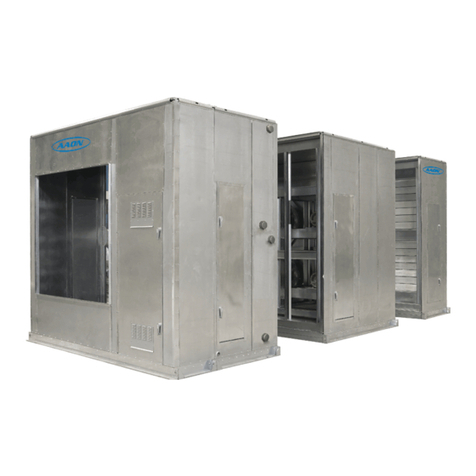
4
OWNER'S INFORMATION
WARNING
Failure to observe the following instructions will result
in premature failure of your system, and possible void-
ing of the warranty.
DIRECT EXPANSION (DX) COOLING UNITS
Never cut off the main power supply to the unit, except
for complete shutdown. When power is cut off from the
unit, compressors with crankcase heaters cannot pre-
vent refrigerant migration. The compressor will cool
down, and liquid refrigerant will accumulate in the
compressor. The compressor is designed to pump only
refrigerant gas and damage may occur when power is
restored.
If power must be cut off for more than an hour, turn the
thermostatsystemswitchto"OFF",andleaveitoffuntil
the main power switch has been turned on again for at
leasttwentyfourhoursonunitswith compressor crank-
caseheaters. Thiswillgivethecrankcaseheatertimeto
clearliquidaccumulationoutofthecompressorbeforeit
is required to run.
Always control the system from the thermostat, or con-
trol panel, never at the main power supply (except in an
emergency or complete shutdown of the system).
During the cooling season, if the air flow is reduced due
to dirty air filters or other reasons, the cooling coils will
get too cold and result in excessive liquid return to the
compressor. As the liquid concentration accumulates,
oiliswashedoutofthecompressor,leavingitstarvedfor
lubrication.
The compressors must be on a minimum of 4 minutes
andoffforaminimumof5minutes. Thecycleratemust
not exceed 8 starts per hour.
THE COMPRESSOR LIFE WILL BE SERIOUSLY
SHORTENEDBYRESULTINGREDUCEDLUBRICA-
TION, AND THE PUMPING OF EXCESS AMOUNTS
OF LIQUID OIL AND REFRIGERANT.
GAS OR ELECTRIC HEATING
Thesystemisdesignedtoheatagivenamountofaireach
minuteitoperates. Iftheamountofairheatedisgreatly
reduced (approximately 1/3 capacity), the heat ex-
changer / heater coil temperature will increase above
acceptable level and result in shut down by a high
temperature safety switch incorporated either in the
heat exchanger or the heater area.
GASHEATUNITS-WARNING: If,duetosafetyswitch
shutofforgassupplyshutofffailure; ALWAYSCLOSE
MANUAL GAS VALVE TO UNIT PRIOR TO ANY
ELECTRICAL SERVICE.
PROLONGED OVERHEATING OF THE HEAT
EXCHANGER WILL SHORTEN ITS LIFE.
WARNING: Improper installation, adjustment, alter-
ation, service, or maintenance can cause property dam-
age, personal injury or loss of life. Installation and
service must be performed by a qualified installer, ser-
vice agency or if gas fired units, the gas supplier. Refer
to installation instructions provided with the unit and
this manual.
CAUTION: While the following incorrect operations
may not cause damage to the system, they will impair
the performance, and may cause the built-in safety
devices to cut the system off completely.
1. LOW AMBIENT OPERATION
The cooling section of a direct expansion (DX) unit
willnotoperateproperlywhentheoutdoortempera-
ture is below 55°F. Outside air intake options are
necessary if operation below 55°F is expected.
2. MULTIPLE UNIT OPERATION
When several units are used in conditioning the
space, and any are combination heating-cooling
units,allsystem thermostat switches mustbesetat
either heating, cooling, or set at "off". Do not run
part of a system switched to an opposite mode.
Cooling only units should be switched to "off" at the
thermostat during the heating season.
WIRING DIAGRAMS
A complete set of unit specific wiring diagrams in both
ladder and point-to-point form are laminated in plastic
and located inside the control compartment door.
CONDENSATE PIPING
A drain trap is to be connected to the drainpan. If codes
require a condensate drain line, it should be the same
pipesizeasthedrainnippleandshouldpitchdownward
toward drain.
The condensate drain pipe ("P" trap) is factory supplied
and shipped in the control access compartment for field
installation. Anairbreakshould beusedwithlongruns
of condensate lines.
▲
!
WARNING
Scroll compressors will be damaged by
operation with the wrong rotation.
THE LOW PRESSURE SWITCH HAS BEEN
DISCONNECTED AFTER TESTING
AT THE FACTORY.
The wiring must be reconnected and proper
rotation determined at the time of start-up by
a qualified service technician using suction
and discharge pressures gauges.
Any alteration should only be made at
the unit power connection.
